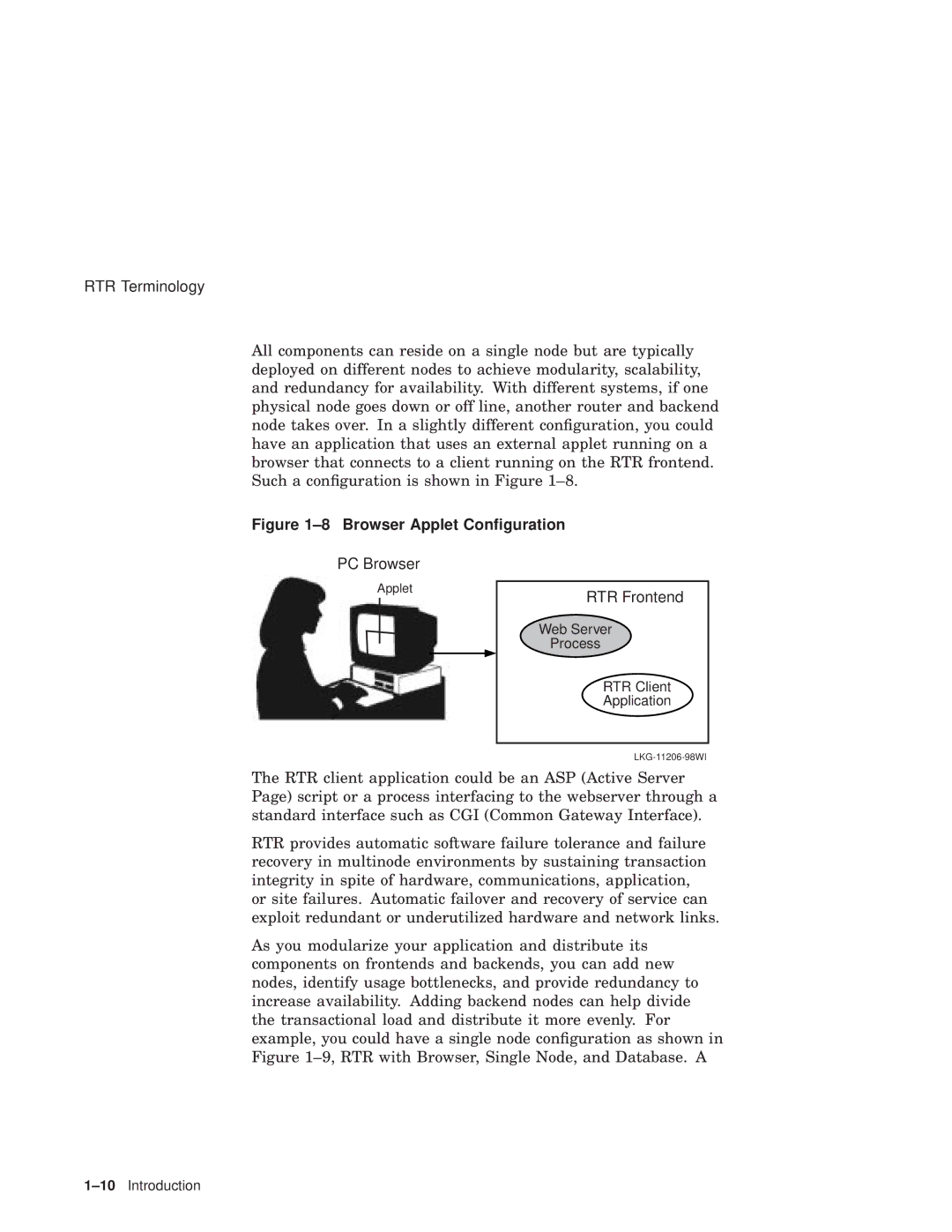
RTR Terminology
All components can reside on a single node but are typically deployed on different nodes to achieve modularity, scalability, and redundancy for availability. With different systems, if one physical node goes down or off line, another router and backend node takes over. In a slightly different configuration, you could have an application that uses an external applet running on a browser that connects to a client running on the RTR frontend. Such a configuration is shown in Figure
Figure 1–8 Browser Applet Configuration
PC Browser
Applet
RTR Frontend
Web Server
Process
RTR Client
Application
The RTR client application could be an ASP (Active Server Page) script or a process interfacing to the webserver through a standard interface such as CGI (Common Gateway Interface).
RTR provides automatic software failure tolerance and failure recovery in multinode environments by sustaining transaction integrity in spite of hardware, communications, application, or site failures. Automatic failover and recovery of service can exploit redundant or underutilized hardware and network links.
As you modularize your application and distribute its components on frontends and backends, you can add new nodes, identify usage bottlenecks, and provide redundancy to increase availability. Adding backend nodes can help divide the transactional load and distribute it more evenly. For example, you could have a single node configuration as shown in Figure
